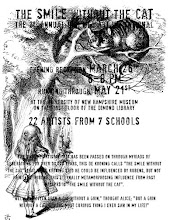Jason Colvin, Trevor Amery, and Dustin O’Hara studied together at the Maryland Institute College of Art. In 2005 they finished their senior year of college in the same thesis class, taught by Phyllis Plattner. Spending an average of six days a week together in and out of school, they inevitably influenced each other in their painting beliefs, theoretical and practical. Pursuing realism with a strong background in observational painting, they each came to painting from the same direction but arrived at different subjects. Jason found his voice mostly in figurative painting, juxtaposing multiple painted images to create metaphor in their unity. Trevor's paintings also create metaphors but more often rely on one or two images to support the idea, at the same time emphasizing the physicality of the paint. Dustin paints from the landscape, always striving to portray the land in a way that captures the feeling of a place. Using brush and palette knife, he transports the viewer into the painted world. All three artists paint in a way that expresses ideas and feelings as well as displaying the skill and craftsmanship of the artist's hand.
-Dustin O'Hara
Trevor Wallack Amery

Dustin O'Hara

Jason Alan Colvin




































